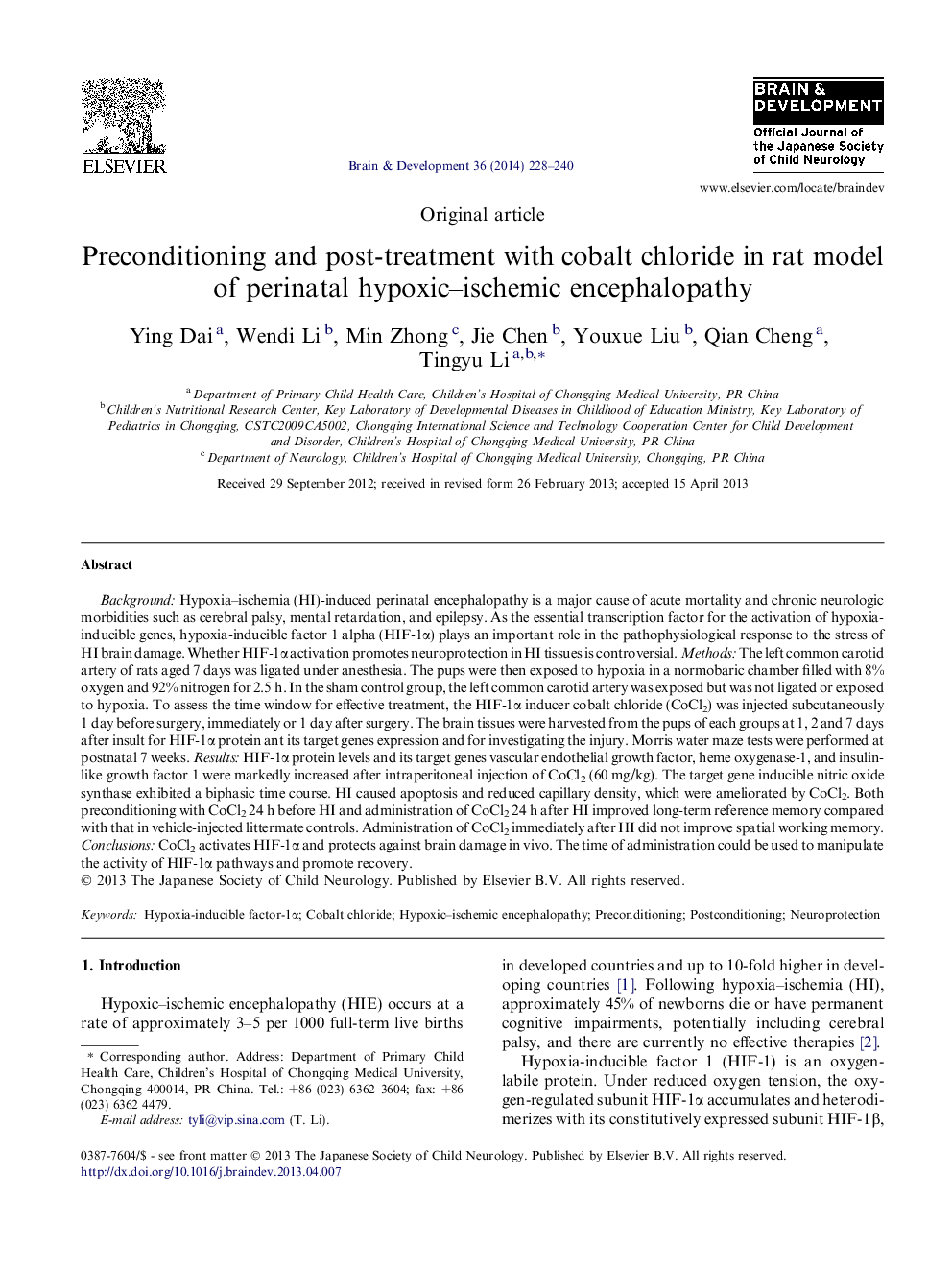| Article ID | Journal | Published Year | Pages | File Type |
|---|---|---|---|---|
| 3037058 | Brain and Development | 2014 | 13 Pages |
Background: Hypoxia–ischemia (HI)-induced perinatal encephalopathy is a major cause of acute mortality and chronic neurologic morbidities such as cerebral palsy, mental retardation, and epilepsy. As the essential transcription factor for the activation of hypoxia-inducible genes, hypoxia-inducible factor 1 alpha (HIF-1α) plays an important role in the pathophysiological response to the stress of HI brain damage. Whether HIF-1α activation promotes neuroprotection in HI tissues is controversial. Methods: The left common carotid artery of rats aged 7 days was ligated under anesthesia. The pups were then exposed to hypoxia in a normobaric chamber filled with 8% oxygen and 92% nitrogen for 2.5 h. In the sham control group, the left common carotid artery was exposed but was not ligated or exposed to hypoxia. To assess the time window for effective treatment, the HIF-1α inducer cobalt chloride (CoCl2) was injected subcutaneously 1 day before surgery, immediately or 1 day after surgery. The brain tissues were harvested from the pups of each groups at 1, 2 and 7 days after insult for HIF-1α protein ant its target genes expression and for investigating the injury. Morris water maze tests were performed at postnatal 7 weeks. Results: HIF-1α protein levels and its target genes vascular endothelial growth factor, heme oxygenase-1, and insulin-like growth factor 1 were markedly increased after intraperitoneal injection of CoCl2 (60 mg/kg). The target gene inducible nitric oxide synthase exhibited a biphasic time course. HI caused apoptosis and reduced capillary density, which were ameliorated by CoCl2. Both preconditioning with CoCl2 24 h before HI and administration of CoCl2 24 h after HI improved long-term reference memory compared with that in vehicle-injected littermate controls. Administration of CoCl2 immediately after HI did not improve spatial working memory. Conclusions: CoCl2 activates HIF-1α and protects against brain damage in vivo. The time of administration could be used to manipulate the activity of HIF-1α pathways and promote recovery.
